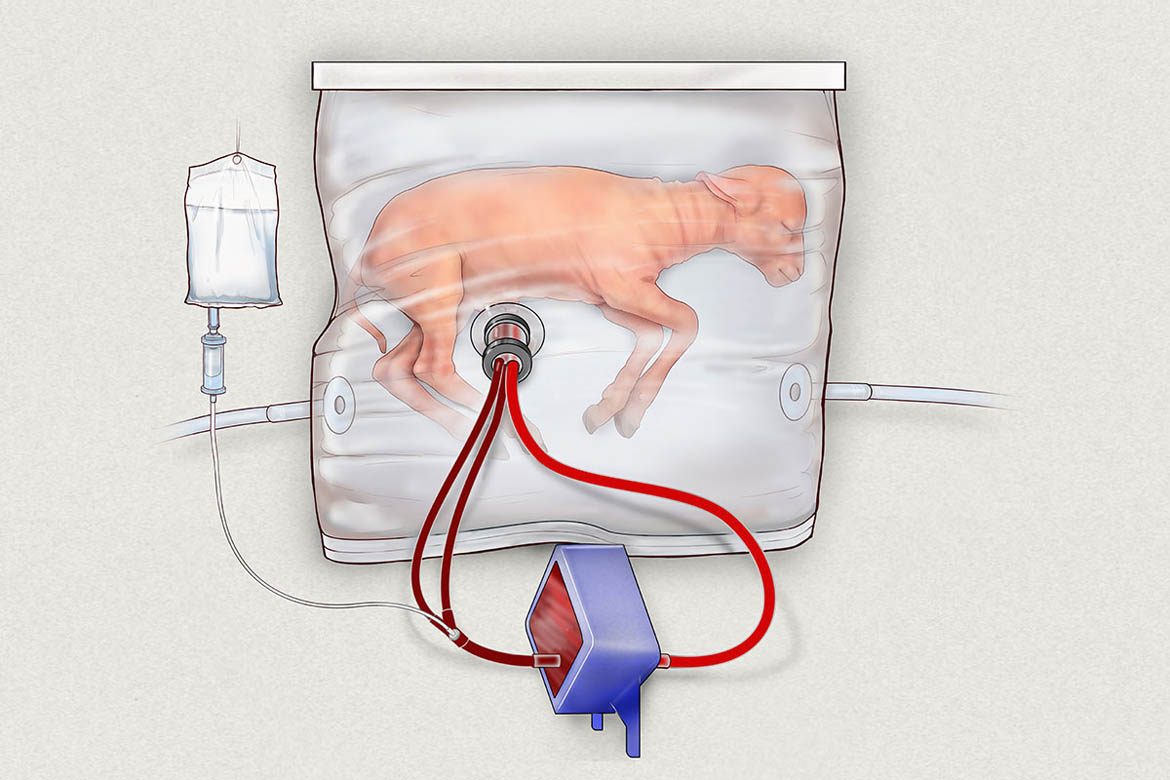By Hannah Schenker
Scientists have successfully replicated the womb to help a premature lamb continue to grow. Does that mean babies are next?
The artificial womb was created in a study by Dr Alan Flake, foetal surgeon at the Children’s Hospital of Philadelphia, and his team, the results of which were recently released in the journal Nature Communications. The lambs at the center of the study were born premature by C-section and transferred to this artificial womb. They have shown that fetal lambs at a similar stage to an extremely premature infant, can be supported to continue growing in this device for up to four weeks – which obviously gives hope for premature babies. That is, these sheep continued to develop their lungs and brains, grew wool, opened their eyes, moved around and even learned to swallow – all in this man-made amniotic sac.
The strange-looking bag is called a Bio Bag, and while it all looks a bit Frankenstein right now, the future of premature babies could be bright. They state that while advancements in neonatal intensive care has improved survival rates of premature babies, being able to keep them in a womb-like environment until they are more developmentally ready could improve long-term health of the babies.
In the U.S, about 10 per cent of babies are born prematurely, meaning they were born before 37 weeks gestation. About 6 per cent of those are born extremely premature, at or before 28 weeks, and these babies are the ones who have the biggest fight ahead of them. Those that survive delivery face intensive support – mechanical ventilation, IVs supplying fluids and nutrition and medications. Those little battlers that survive all of this can go on to suffer a range of health problems, due to the interrupted gestation. This is why scientists have for decades been working on creating an artificial womb that would recreate a more natural environment for the baby.
One of the main challenges has been to recreate the circulatory system that connects mother and baby – the mother’s blood flows through to the baby and back again, a system that oxygenates the blood. This has been addressed in this new artificial womb with a pumpless system that allows the blood to flow easily through an oxygenator and back to the baby.












The mother blood NEVER goes in the baby (unless damage ocurred to the placenta)